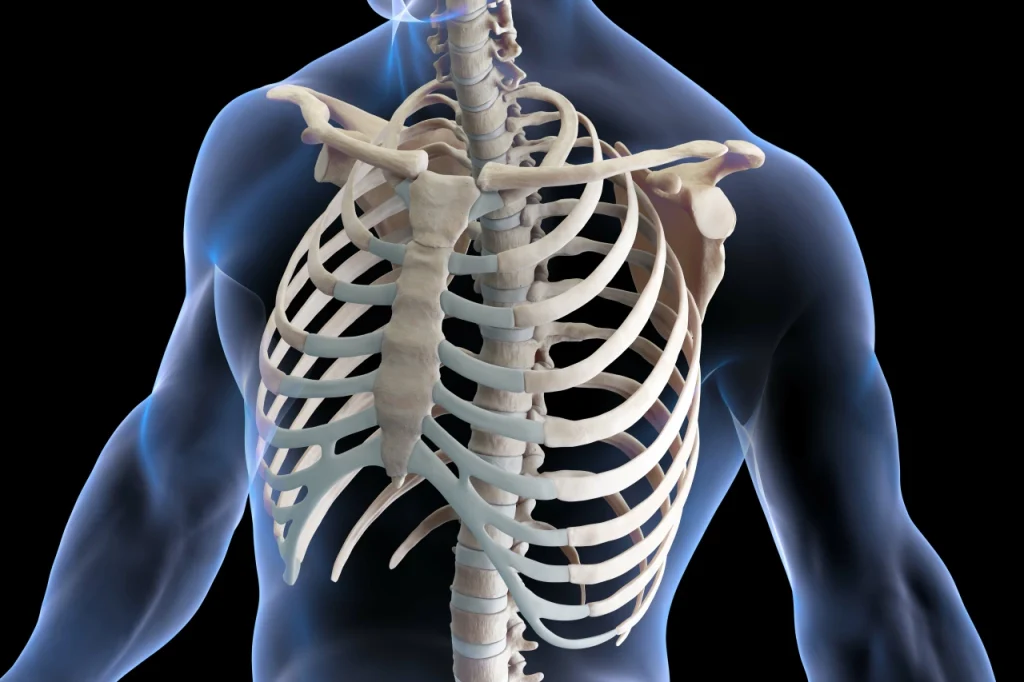鍼灸担当の山本浩士です。
50代にして、BJJ(ブラジリアン柔術)を始めた男性が、練習で怪我をしたとのこと。
詳しく聞くと、寝技の練習をしていた時、相手の両足が肋骨部に強く当たったようです。
その後から、咳をしたり、腕の曲げ伸ばし(特に腕立てのように負荷がかかった状態)で特に胸から側面にかけて痛みが出るようです。
病院には行っていないとのことで、詳しいことはなんとも言えませんが・・・
状況からは骨折などはなさそうです。
おそらく、肋軟骨炎のような状態ではないかなと思います。
壁に手をついてもらい、軽い負荷をかけた状態で腕立て伏せのように曲げ伸ばしをしてもらいます。
けっこう痛そうです。
痛みから、胸と背中が緊張してちゃんと動けていません。だからよけい痛みが出るんですよね。
まずは、その動きのブロックを解除させることにしました。
経筋で考えると、胸肋部は少陰・厥陰・陽明あたりが関与してきます。
今回の状況では、少陰と厥陰の経筋を操作するのが良いと考え、上肢から操作をしました。
肋間筋、腹斜筋、前鋸筋、大小胸筋、そのあたりが協調して動くように、相手の上肢に軽度の圧力をかけながら、痛みが出ないように動かします。
一回の施術は30秒ほど。
それを左右、数回繰り返します。
その上で、痛みを感じていた動作を再度やってもらいます。
すると、痛みがかなり軽減していました。
しばらく練習できないかなーーーと悩んでいましたが、これならもう1日ほど休めば、また練習に復帰はできると思います。
あとは、リハビリの方法を教えて治療を終えました。
今までに、プロ・アマ問わず、格闘家や武術家をたくさん治療してきました。
怪我が原因で試合に出られない、手術をするために試合も練習も休まなければならない、怪我を原因に引退をする・・・そういう悩みを聞くのが悲しくて、なんとかしたいと技術を磨いてきました。
手術以外の方法はないと言われた選手を、手術をせずに復帰させる。
怪我だけでなく、慢性疾患でも同じです。
東洋医学でできることは限られていますが、西洋医学ではできない事ができることもあります。
何かお悩みがあれば、まずはご相談ください

Treatment for Chest and Rib Pain
A man in his 50s who recently started practicing Brazilian Ju-Jutsu (BJJ) reported an injury sustained during training. During groundwork practice, his opponent’s legs struck his rib area with significant force. Since then, he has experienced pain around his chest and side, particularly when coughing or performing movements that involve flexion and extension of his arms, such as push-ups or other weight-bearing activities.
Although he has not visited a hospital, the symptoms suggest that there are no fractures. Based on the situation, it seems likely that he may be dealing with a condition resembling costochondritis.
To assess his condition, I asked him to place his hands on a wall and perform a light push-up motion to apply mild pressure while moving his arms. He appeared to experience significant pain during this movement.
The pain caused tension in his chest and back, preventing him from moving properly.
This lack of movement can sometimes worsen the pain.
So, my first step was to release the blockages restricting his movement.
From the perspective of Keikin/jingjin (tendon-muscular meridians), the chest and rib area is influenced by the Shoin/Shoyin, Ketsuin/Jueyin, and Yomei/Yangming meridians. In this case, I decided to focus on manipulating the Shoin and Ketsuin meridians via the upper limbs.
I applied gentle pressure to the intercostal muscles, external oblique, serratus anterior, and pectoralis major and minor, encouraging these muscles to move in coordination. By applying mild resistance to his upper limbs, I guided his movements carefully to ensure no pain was elicited during the process.
Each session of manipulation lasted about 30 seconds, and this was repeated on both sides several times. Afterward, I asked him to repeat the previously painful movements. He reported a significant reduction in pain.
The patient had been concerned that he might need to take an extended break from training. However, based on this improvement, I advised him to rest for just one more day before resuming practice. Before concluding the session, I provided him with a rehabilitation plan tailored to his recovery.
Over the years, I have treated numerous martial artists and fighters, both professional and amateur. It has always saddened me to hear of athletes who must miss competitions, take extended breaks from training for surgery, or even retire due to injuries.
Our goal has been to refine my techniques to address these challenges effectively.
In some cases, I’ve helped athletes return to their sport without surgery, even when surgery was deemed the only option. This approach isn’t limited to injuries―it extends to managing chronic conditions as well.
While Oriental medicine has its limits, it also offers solutions that Western medicine often cannot. If you have concerns or difficulties, please don’t hesitate to reach out for a consultation.